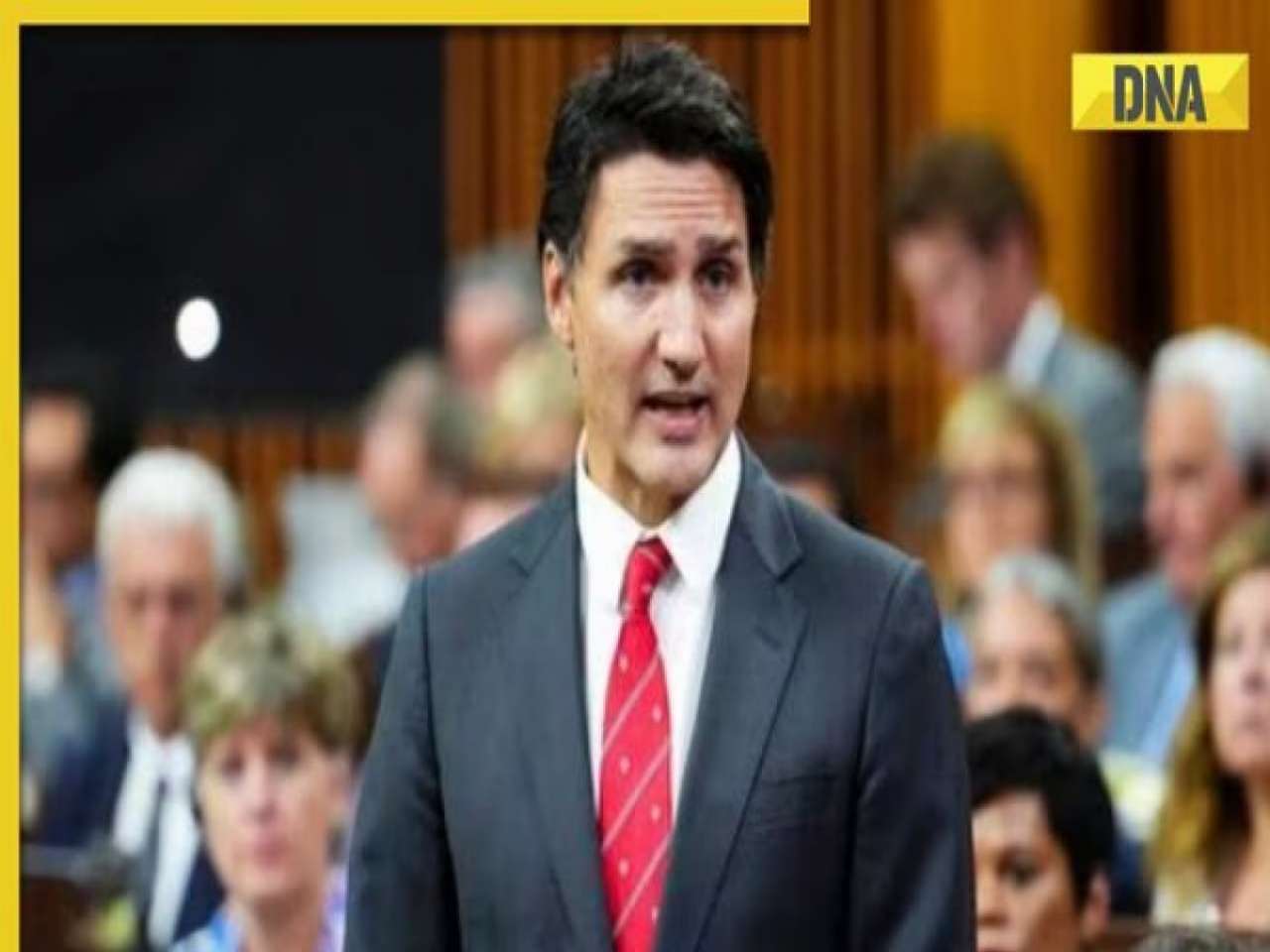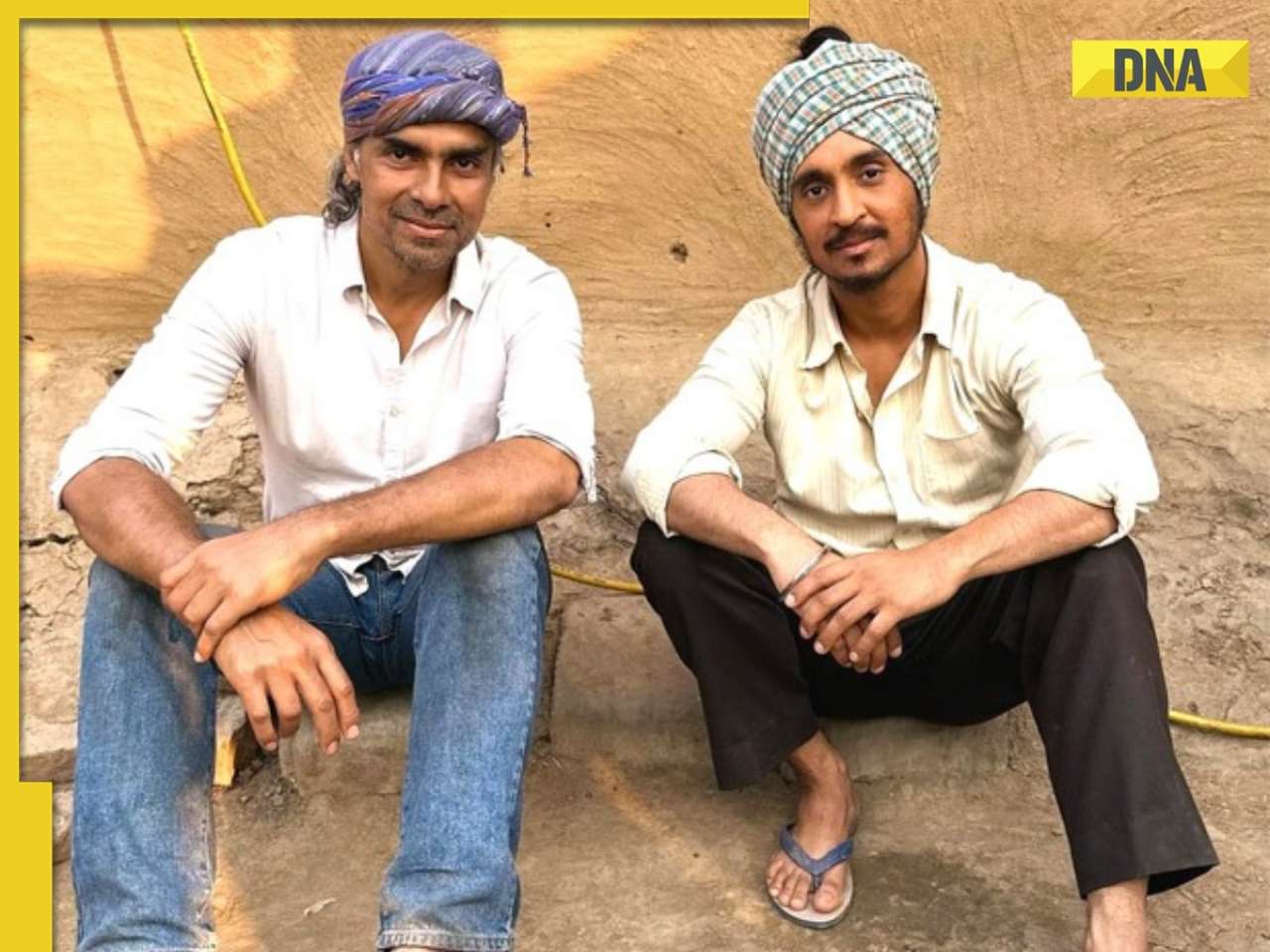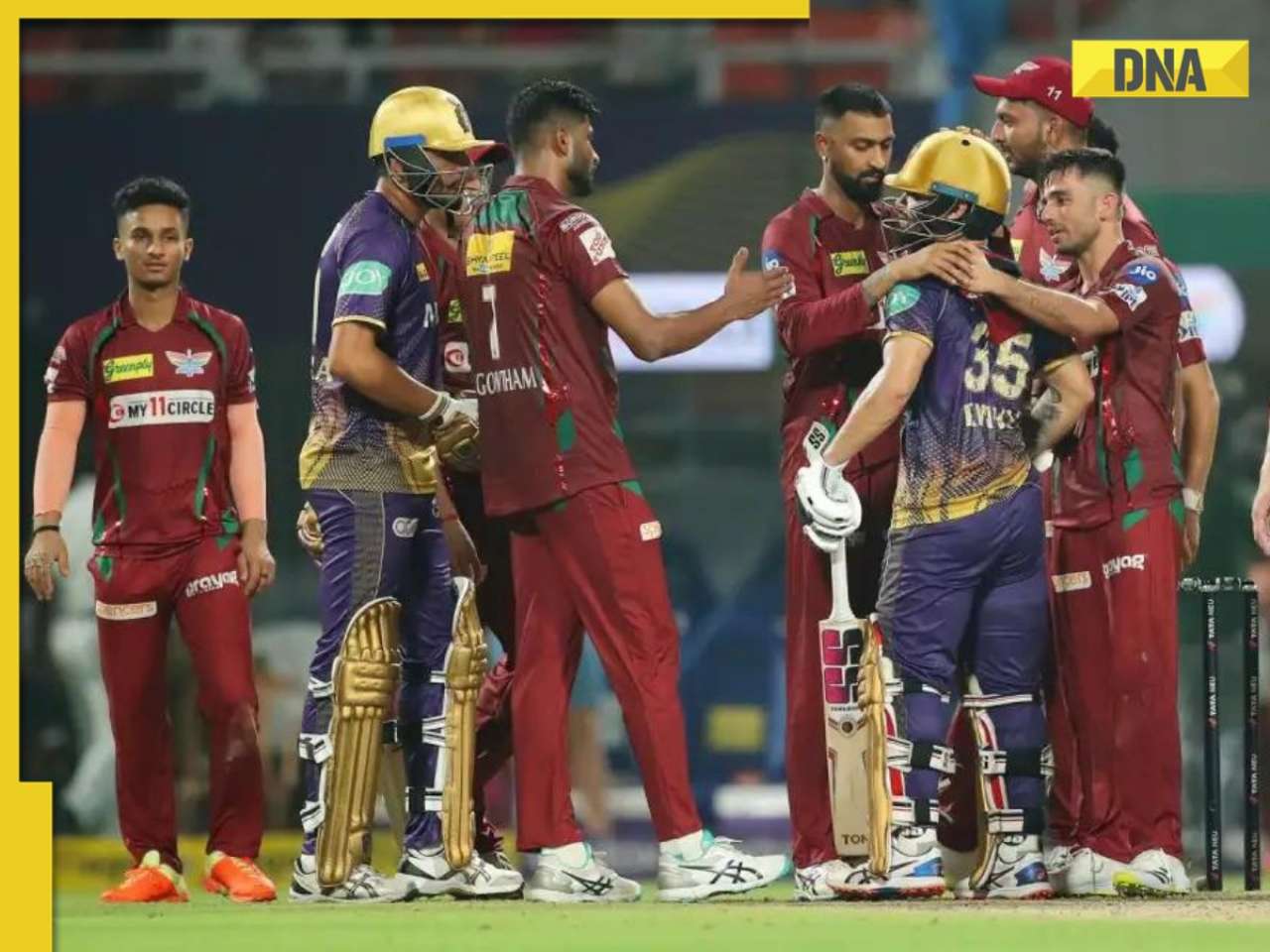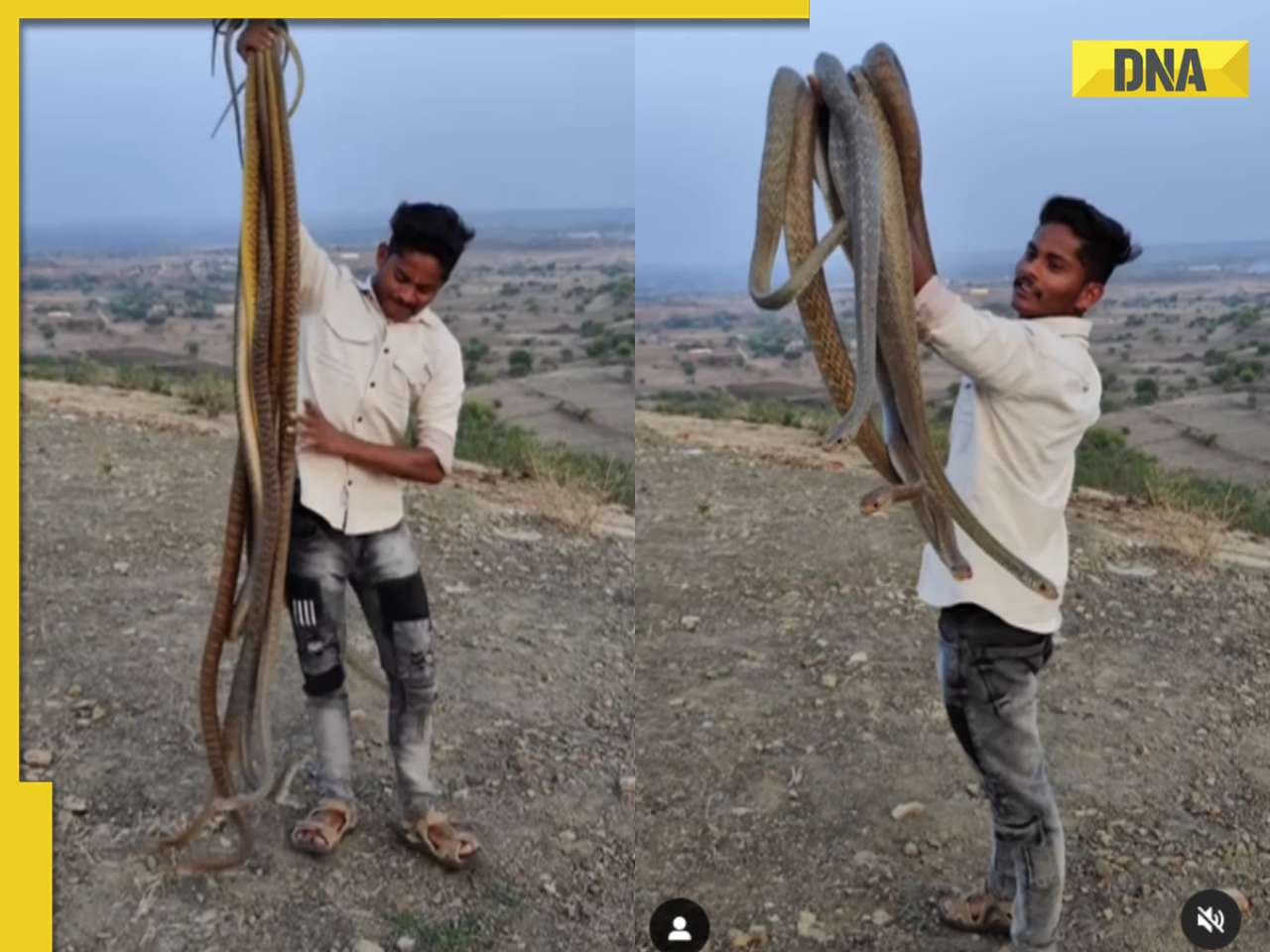In January this year, Union shipping minister, Nitin Gadkari, let it be known that JNPT would soon develop a parallel port in Maharashtra. He mentioned three locations that had already been identified--Vijaydurg, Revas-Karanja and Dahanu.
In January this year, Union shipping minister, Nitin Gadkari, let it be known that JNPT would soon develop a parallel port in Maharashtra. He mentioned three locations that had already been identified--Vijaydurg, Revas-Karanja and Dahanu.
JNPT has finally zeroed in on Dahanu. But it is willing to take a second look at Vijaydurg as well, just in case the environment lobby in Dahanu becomes too shrill for comfort. The authorities are aware that almost 15 years ago there were huge protests against a power plant being located there. However, even then, the protests did not deter the government from allowing the power plant to come up there.
"This time, we are taking no chances," says a source close to the shipping ministry. "We are taking all environment mitigation steps first. Moreover, unlike as in the power plant, we are not acquiring any land. We will be taking up the inter-tidal land, and filling it up to reach the point where the draft of the ocean is close to around 20 metres."
The new port will require around 1,000 hectares. Since there will be no displacement of existing people, as no existing land will need to be acquired, the costs of any mitigation will be limited. The central government is set to grant the new port all the clearances that it might require.
This will be the first 20-metre draft port in Maharashtra. Mazgaon Dock, close to Bombay Port, has a draft of barely a few metres (http://www.dnaindia.com/money/interview-guidelines-for-ppp-in-shipbuilding-may-come-in-a-month-1643987). JNPT itself had a draft of just 12 metres, but opted to go in for dredging to increase its depth to 14 metres for a channel length of 33 km. That involved a cost of Rs 1,600 crore.
It is now planning to dredge even deeper to 15 metres. But this additional metre could cost it a whopping Rs 3,000 crore. It is this sharpening increase in costs, as dredging goes deeper, that made JNPT's authorities, headed by its chairman, N N Kumar, decide that deepening the channel to 18 metres would be far too expensive – over Rs 10,000 core – much more expensive than building a new port which could cost it Rs 3,000 crore to Rs 5,000 crore (http://www.dnaindia.com/mumbai/report-jnpt-to-see-rs-21000-cr-investments-by-2020-2043981).
Hence, Kumar and his team went about convincing the central government to allow JNPT to stick to a depth of 15 metres only and look for an alternate location for a parallel port.
That gave Maharashtra two benefits. Not increasing the draft to 18 metres at JNPT allowed the height of the proposed Mumbai Trans-Harbour Link (MTHL) connecting Wadala to Nhava Sheva to remain at the same height that was earlier proposed. If bigger ships had been allowed to come into JNPT, the height of MTHL would also have to be raised. That would mean considerably higher costs for the state. By sticking to 15 metres, JNPT saved both itself and the states a huge amount of money.
The second benefit is the state has first all-weather, deep water port. Both Dahanu and Vijaydurg offer a natural depth of 20 metres.
JNPT plans to make this port a multi-product one. "It will cater to bulk, liquid and container traffic," says Kumar, though the focus will be on the first two.
Currently, all coal, oil, food grain or any other bulk product that has to be imported or exported goes to Gujarat's ports. Even Dighi Port, the new port being developed by Vijay Kalantri (though many industry sources believe this to be indirectly controlled by Reliance Industries) is also a bulk port but is unlikely to have a draft of more than 14 metres.
That will make Dahanu (or Vijaydurg) strategically significant. It will enjoy proximity to JNPT's Nhava Sheva terminals. It will also make Maharashtra a good destination for bulk imports and exports.
According to Kumar, the new port will be jointly owned by both JNPT (75%) and the Maharashtra government (25%). According to some sources, the parallel port should be readied in three and five years.
(This is second part of a three-part series)
![submenu-img]() 'They unilaterally took some measures': EAM Jaishankar on new Nepal 100 rupee currency
'They unilaterally took some measures': EAM Jaishankar on new Nepal 100 rupee currency![submenu-img]() Meet Ice Cream Lady of India, who built Rs 6000 crore company, started with small investment of Rs…
Meet Ice Cream Lady of India, who built Rs 6000 crore company, started with small investment of Rs…![submenu-img]() ‘Canada a rule-of-law country’: PM Trudeau after 3 Indian arrested over Hardeep Nijjar's murder
‘Canada a rule-of-law country’: PM Trudeau after 3 Indian arrested over Hardeep Nijjar's murder![submenu-img]() Viral video: Specially-abled girl’s energetic dance to Bollywood song wows internet, watch
Viral video: Specially-abled girl’s energetic dance to Bollywood song wows internet, watch![submenu-img]() 'Baap re baap': Imtiaz Ali reveals Diljit Dosanjh was scandalised by old women's 'vulgar' improvisation on Chamkila set
'Baap re baap': Imtiaz Ali reveals Diljit Dosanjh was scandalised by old women's 'vulgar' improvisation on Chamkila set![submenu-img]() DNA Verified: Is CAA an anti-Muslim law? Centre terms news report as 'misleading'
DNA Verified: Is CAA an anti-Muslim law? Centre terms news report as 'misleading'![submenu-img]() DNA Verified: Lok Sabha Elections 2024 to be held on April 19? Know truth behind viral message
DNA Verified: Lok Sabha Elections 2024 to be held on April 19? Know truth behind viral message![submenu-img]() DNA Verified: Modi govt giving students free laptops under 'One Student One Laptop' scheme? Know truth here
DNA Verified: Modi govt giving students free laptops under 'One Student One Laptop' scheme? Know truth here![submenu-img]() DNA Verified: Shah Rukh Khan denies reports of his role in release of India's naval officers from Qatar
DNA Verified: Shah Rukh Khan denies reports of his role in release of India's naval officers from Qatar![submenu-img]() DNA Verified: Is govt providing Rs 1.6 lakh benefit to girls under PM Ladli Laxmi Yojana? Know truth
DNA Verified: Is govt providing Rs 1.6 lakh benefit to girls under PM Ladli Laxmi Yojana? Know truth![submenu-img]() Streaming This Week: Heeramandi, Shaitaan, Manjummel Boys, latest OTT releases to binge-watch
Streaming This Week: Heeramandi, Shaitaan, Manjummel Boys, latest OTT releases to binge-watch![submenu-img]() Remember Ayesha Kapur? Michelle from Black, here's how actress, nutrition coach, entrepreneur looks after 19 years
Remember Ayesha Kapur? Michelle from Black, here's how actress, nutrition coach, entrepreneur looks after 19 years![submenu-img]() Remember Heyy Babyy's cute 'Angel' Juanna Sanghvi? 20 year-old looks unrecognisable now, fans say 'her comeback will...'
Remember Heyy Babyy's cute 'Angel' Juanna Sanghvi? 20 year-old looks unrecognisable now, fans say 'her comeback will...'![submenu-img]() In pics: Arti Singh stuns in red lehenga as she ties the knot with beau Dipak Chauhan in dreamy wedding
In pics: Arti Singh stuns in red lehenga as she ties the knot with beau Dipak Chauhan in dreamy wedding![submenu-img]() Actors who died due to cosmetic surgeries
Actors who died due to cosmetic surgeries![submenu-img]() DNA Explainer: Why Harvey Weinstein's rape conviction was overturned, will beleaguered Hollywood mogul get out of jail?
DNA Explainer: Why Harvey Weinstein's rape conviction was overturned, will beleaguered Hollywood mogul get out of jail?![submenu-img]() What is inheritance tax?
What is inheritance tax?![submenu-img]() DNA Explainer: What is cloud seeding which is blamed for wreaking havoc in Dubai?
DNA Explainer: What is cloud seeding which is blamed for wreaking havoc in Dubai?![submenu-img]() DNA Explainer: What is Israel's Arrow-3 defence system used to intercept Iran's missile attack?
DNA Explainer: What is Israel's Arrow-3 defence system used to intercept Iran's missile attack?![submenu-img]() DNA Explainer: How Iranian projectiles failed to breach iron-clad Israeli air defence
DNA Explainer: How Iranian projectiles failed to breach iron-clad Israeli air defence![submenu-img]() 'Baap re baap': Imtiaz Ali reveals Diljit Dosanjh was scandalised by old women's 'vulgar' improvisation on Chamkila set
'Baap re baap': Imtiaz Ali reveals Diljit Dosanjh was scandalised by old women's 'vulgar' improvisation on Chamkila set![submenu-img]() This actor, who worked with Karan Johar and Farhan Akhtar, gave superhit shows, saw failed marriage, killed himself at..
This actor, who worked with Karan Johar and Farhan Akhtar, gave superhit shows, saw failed marriage, killed himself at..![submenu-img]() Did you know Ranveer Singh's grandmother was popular actress? Worked with Raj Kapoor; her career affected due to...
Did you know Ranveer Singh's grandmother was popular actress? Worked with Raj Kapoor; her career affected due to...![submenu-img]() India's highest-paid TV actress began working at 8, her Bollywood films flopped, was seen in Bigg Boss 1, now charges...
India's highest-paid TV actress began working at 8, her Bollywood films flopped, was seen in Bigg Boss 1, now charges...![submenu-img]() Shreyas Talpade wonders if his heart attack was due to Covid vaccine: 'We don’t know what we have taken inside...'
Shreyas Talpade wonders if his heart attack was due to Covid vaccine: 'We don’t know what we have taken inside...'![submenu-img]() IPL 2024: Faf du Plessis, Virat Kohli help Royal Challengers Bengaluru defeat Gujarat Titans by 4 wickets
IPL 2024: Faf du Plessis, Virat Kohli help Royal Challengers Bengaluru defeat Gujarat Titans by 4 wickets![submenu-img]() IPL 2024: Why is Sai Kishore not playing today's RCB vs GT match?
IPL 2024: Why is Sai Kishore not playing today's RCB vs GT match?![submenu-img]() 'Mumbai Indians ki kahani khatam': Ex-India star slams Hardik Pandya after MI's loss to KKR at Wankhede
'Mumbai Indians ki kahani khatam': Ex-India star slams Hardik Pandya after MI's loss to KKR at Wankhede![submenu-img]() LSG vs KKR, IPL 2024: Predicted playing XI, live streaming details, weather and pitch report
LSG vs KKR, IPL 2024: Predicted playing XI, live streaming details, weather and pitch report![submenu-img]() LSG vs KKR IPL 2024 Dream11 prediction: Fantasy cricket tips for Lucknow Super Giants vs Kolkata Knight Riders
LSG vs KKR IPL 2024 Dream11 prediction: Fantasy cricket tips for Lucknow Super Giants vs Kolkata Knight Riders![submenu-img]() Viral video: Specially-abled girl’s energetic dance to Bollywood song wows internet, watch
Viral video: Specially-abled girl’s energetic dance to Bollywood song wows internet, watch![submenu-img]() Viral video: Man educates younger brother about mensuration, internet is highly impressed
Viral video: Man educates younger brother about mensuration, internet is highly impressed![submenu-img]() Girl's wedding dance to Haryanvi song interrupted by mother in viral video, internet reacts
Girl's wedding dance to Haryanvi song interrupted by mother in viral video, internet reacts![submenu-img]() Viral video: Man fearlessly grabs dozens of snakes, internet is scared
Viral video: Man fearlessly grabs dozens of snakes, internet is scared![submenu-img]() This mysterious mobile phone number was suspended after three users...
This mysterious mobile phone number was suspended after three users...






































)




)
)
)
)
)
)